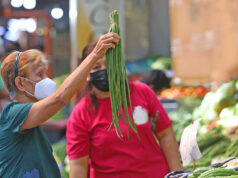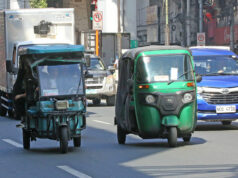Soybean R&D program hoping to boost yields
THE Department of Science and Technology-Philippine Council for Agriculture, Aquatic and Natural Resources Research and Development (DOST-PCAARRD) said it launched a soybean research and development (R&D) program with the aim of increasing farmers’ incomes by boosting production and lowering post-harvest losses.
“There are several factors contributing to the low competitiveness of our soybean. One main reason is the relative high cost of domestically producing soybean due to high cost of inputs such as land, labor, capital and management. Also, the Philippines’ soybean production is relatively small in terms of area and volume of production,” PCAARRD Acting Executive Director Reynaldo V. Ebora said in an email interview last week.
“This can be due to inefficient value chain and logistics for local beans. Some of the problems encountered by farmers in production and marketing are low yield, high post-harvest losses, lack of capital and planting materials, problems on insects, pests, and diseases, lack technical know-how, low market price, and limited market outlets,” Mr. Ebora added.
However, Mr. Ebora said that soybeans can be competitive in a way because the freshness of imports cannot be preserved for long.
“Nevertheless, there is an opportunity to compete in the food soybean market since local beans have the advantage of freshness and fewer food miles. For this reason, PCAARRD launched the program with the aim of increasing soybean productivity for higher farm income and more sustainable farming resulting from integrating soybean in the cropping system; supply chain improvement, and enhanced health and wellness from higher consumption of soybeans as food,” Mr. Ebora said.
The program involves four projects: analysis of supply chain and competitiveness, productivity and technical efficiency of soybean as food; soybean for higher income and enhanced soil health under different cropping systems; enhancing the sustainability of informal soybean seed sector; and soybean variety development for large seed size, higher yields and enhanced function properties.
The program is in cooperation with the University of the Philippines Los Baños (UPLB), University of the Philippines Mindanao (UPM), Central Luzon State University (CLSU), and Department of Agriculture Regional Field Offices 2, 10, 11, and 13.
Included in the program is the teaching of farmers how to process soy milk, make soybean curd or taho, tofu, and hotcakes.
“With the help of our R&D partners (such as the Department of Agriculture), we hope that our farmers will start adopting the developed technologies and system, and will breed the new and improved soybean varieties for food/feed use. Eventually, we anticipate that these will result in increased soybean productivity, improved quality of soybean, and more sustainable farming,” Mr. Ebora said.
Mr. Ebora said the program does not seek to achieve self-sufficiency in soybeans.
“The program is not pushing for the Philippines to be self-sufficient in soybeans. Since the Philippines is currently importing 99% of its soybean requirement (for both feeds and food), it cannot be self-sufficient in the short term,” Mr. Ebora said.
Mr. Ebora said that the program, rather, will help farmers by providing information on where and how to improve the soybean supply chain; technologies for optimum yield management under different cropping systems (rice-based, corn-based, cassava-based) for improved farm productivity and soil health, and training for stakeholders in technology; systems for on-farm seed post-harvest handling, packaging, and storage; new and improved soybean varieties for various agro-ecological zones; and stable soybean lines with large seeds, good processing quality, high yields and tolerance to diseases, and soybean lines with enhanced levels of functional properties. — Reicelene Joy N. Ignacio



